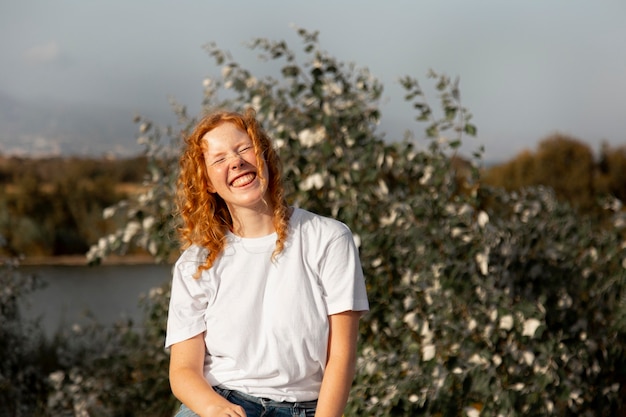
I know this might stir up some differing opinions, but I figure it’s worth sharing. With this pregnancy, I’ve decided to switch to nearly all organic baby clothes. This wasn’t something I managed with our older kids or thought was important until recently, but I’ve got some solid reasons for making the change with our sixth baby.
With our first two kids, a boy and a girl, we were really fortunate to get hand-me-downs, which saved us from buying a lot of baby stuff. Those clothes served us well through all our children, but after being worn by two boys and three girls, and stored in the attic in between, not much was left in good condition.
Earlier this year, I went through those attic treasures and found just six items that weren’t stained or full of holes. Some had even dry-rotted from being stored so long. Knowing I’d have to replace most of the clothes, I started looking into sustainable and eco-friendly baby clothing options, and that’s when I came across these organic lines.
Although our family has been on the organic food path for years, switching to organic clothing wasn’t on my radar until I started digging into it. Turns out, it should have been a priority all along. Here’s why:
Cotton is one of the most chemically treated crops globally. It covers just 3% of the world’s farmed land but uses 25% of the insecticides and 10% of the pesticides worldwide. With these concerning stats, I’ve decided to opt for organic baby clothes to help cut down on pesticide usage and protect our baby’s sensitive skin.
There are a ton of pesticides used in cotton farming, and about half are labeled as possibly or probably cancer-causing by the EPA. Our last baby had eczema, and I’ve wondered if it was partly because she missed out on the usual birth-related bacterial transfer. I also suspect her clothes may have played a role, as she seemed to react to wearing them.
Incredibly, only about 10% of these pesticides do their job, with the rest seeping into the air and water. Some estimates suggest that up to two million birds might die each year from just one insecticide used on cotton. Though most pesticide residues get washed away during processing, the small amounts that remain—and the larger environmental impact—are alarming.
Beyond the pesticides, converting raw cotton into clothing involves dozens more chemicals, including bleaches. Plus, cottonseed oil, despite not being edible technically, undergoes extensive chemical treatment to become usable.
While conventional cotton isn’t perfect, it’s usually a better choice than many synthetic fabrics. The latter often contain petrochemicals and plastics, which have been linked to hormonal imbalances and potentially some cancers. It sounds crazy, but consider how much we worry about plastics in our environment and then think of wearing those chemicals on your largest organ—your skin—daily.
Another issue with conventional fabrics is the finishing chemicals and flame retardants in many children’s clothes. Protecting kids from fire is important, but the chemicals like PBDEs used for this have been linked to hormone issues, early puberty, and developmental delays. Over 80% of children’s clothing tested contain these chemicals, and they’re found in kids’ blood, urine, and even breast milk.
Despite these worries, there’s good news. We’re seeing more organic cotton options popping up. Organic cotton is grown without harmful pesticides and chemicals, following strict guidelines to prevent contamination. It’s safer for the environment, the farmers, and offers a long-term solution as pests become more pesticide-resistant.
Whether you’re gearing up for your first baby or, like me, have a few kiddos, there are simple and affordable ways to avoid harmful chemicals in clothing. If you’re starting fresh, consider putting together a capsule wardrobe of organic pieces. Although organic options can be pricier, I’ve managed to find them at deals that match or even undercut major baby brands.
Reflecting on my past experience as a mom of six, I’ve realized we used far more clothes than we needed. Our closets were crammed with hand-me-downs, but we only ever used a handful of favorite outfits for each baby. So this time, I’m starting with just 7-10 outfits, focusing on quality over quantity, and it hasn’t cost more than buying from regular baby stores.
Thanks to growing demand, many organic brands meet high standards without breaking the bank. While I haven’t tried them all, readers have recommended many available online and in local shops.
Even though I can’t afford to replace all our clothes with organic ones, I’m slowly leaning that way as new purchases become necessary. Meanwhile, I’m choosing natural fiber clothes—cotton, wool, silk, cashmere, hemp, and linen—and buying second-hand when possible. Shopping thrift stores and consignment shops not only saves money but helps the planet by reusing clothes that have been washed multiple times, reducing any leftover residue.
In an ideal world, we’d wear only organic clothes, avoid synthetics, and say goodbye to heavily sprayed cotton. But since that’s not feasible for most families, we can make smarter choices, opting for safer options that save money and help the environment. By choosing natural fibers and second-hand options when we can, we support our health, our finances, and our planet. Have you thought about organic clothing before? Maybe tried second-hand options? Is it something you’d consider now?

